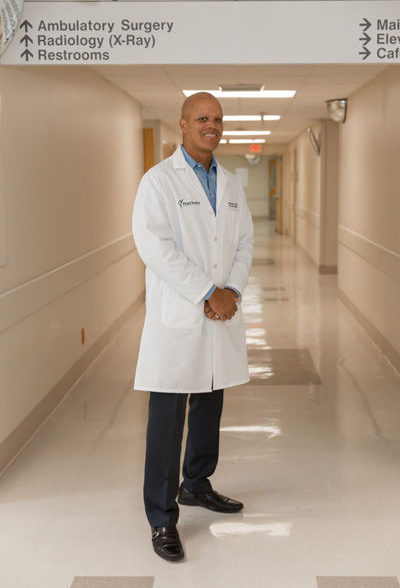
There are more than 30,000 orthopedic surgeons in the U. S., but Dr. Ken Sands is the only one in the state of Florida trained and certified to employ a new total knee replacement technology that preserves healthy anterior cruciate ligaments – or ACLs – resulting in a post-operative joint that feels and functions more like a natural knee.
Sands, who practices at Sebastian River Medical Center, is part of a select group of 30 orthopedic surgeons nationwide who are using a new generation of prosthetic knee joint called the “Journey II XR” from global medical device manufacturer Smith and Nephew and their primary goal is to save healthy ACLs.
ACL injuries – and the importance of these ligaments to proper knee function – is a common topic in sports medicine, especially among doctors who treat players in the National Football League. Just last year over 120 NFL players had their careers ended or put on ice due to torn ACLs.
Yet, in the vast majority of total knee-replacement procedures done today, one of the first things that happens is that the ACL is cut away.
Sands, who spent more than a dozen years as a U.S. Army orthopedic physician and director of the Army’s Adult Joint Reconstruction program at the William Beaumont Army Medical Center in El Paso, Texas, thinks that summarily removing a healthy ACL during a knee-replacement procedure can be a big mistake.
“The ACL,” explains Sands, “works in conjunction with the other ligaments inside the knee. There are four ligaments in the knee. The ACL, PCL or posterior cruciate ligament, the medial collateral ligament and lateral collateral ligament. When they all work together that is what stabilizes your knee.”
Sands continues by saying, “The ACL stabilizes the knee from front to back. People who receive [traditional] total knee replacements often experience something called paradoxical motion which means that their knee moves abnormally forward before it moves backwards. That’s because they have had their ACL removed. When we preserve the ACL, the [replacement] knee functions as a more natural knee. It allows people to bend their knees in a more natural way.”
The U.S. National Library of Medicine at the National Institutes of Health backs up Sands’ contention by unequivocally stating that knee replacement procedures “which retain the ACL provide relatively normal knee kinematics and favorable knee function compared with conventional knee replacement surgeries which sacrifice the ACL.”
“When you preserve the ACL,” Sands says, “the knee is being driven by the natural ligaments and it feels more natural.”
Since the Centers for Disease Control and Prevention projects that by 2020, some 3 million knee replacements will be performed annually in this country, surgeons and manufacturers worldwide are scrambling to find the best possible combination of procedures and replacement joints.
Sands is quick to point out that the actual ACL-sparing procedure is not new. The technique dates back to the 1960s and ’70s but has not been widely used.
“I believe that as many as 70 percent of all my patients requiring total knee replacements will benefit from this exciting, new surgical treatment that preserves as much of the natural knee as possible,” exclaims Sands.
Sands also points to faster recoveries and greater stability in the new knee as potential advantages in allowing patients to move more quickly on to complex activities including, “tennis, skiing, dancing, golfing and hiking.”
Moreover, substantially less of a patient’s natural bone (from the femur and the tibia) needs to be cut away in order to implant the Journey II XR replacement joint.
Following recent trends, London-based Smith and Nephew – which was founded in 1856 – has adopted the concept of customizing their replacement joints with modern imaging techniques.
According to Sands, “What we use a lot on these implants is something called MRI-based patient-specific cutting blocks. The patient will undergo an MRI, plus an X-ray from their hip to their ankle. Then that information is sent to the engineers back at Smith and Nephew. They will come up with a cutting block that will only fit on that particular patient.”
“All we really are doing,” as far as bone-cutting is concerned says Sands, “is trimming. We only trim about 8 millimeters of bone away from the thigh bone and shin bone. We are basically trimming away only the arthritic sections. When you do a traditional total knee replacement, you try and make the bones fit the implant. Here, we are leaving the natural anatomy as pristine as we can,” by making the implant fit the patients’ bones.
The Melbourne-based Sands performs his orthopedic procedures at the Sebastian River Medical Center. He plans to open an office in the Sebastian-Vero area this fall. In the meantime he can be reached at 709 S. Harbor City Blvd., Suite 100 in Melbourne. The phone is 321-725-2225.



